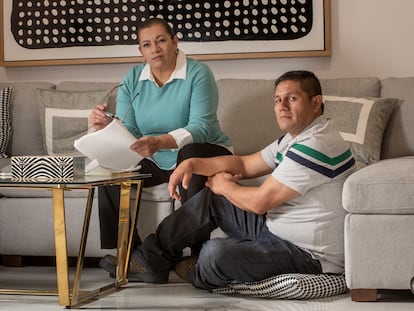A successful ‘anti-Bukele’ criminal justice model in Costa Rica
The Central American nation is pioneering a restorative system that prioritizes rehabilitation over prison
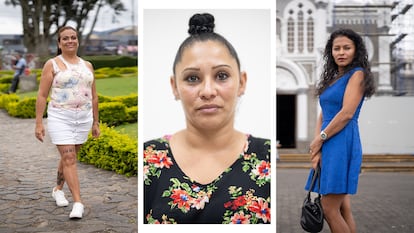

Maybe it was the marijuana and cocaine she tried when she was 12. Maybe it was her abusive mother or a childhood marked by poverty and hunger. Maybe it was her ex-husband’s beatings. Erenia Cerdas isn’t really sure what led her down the wrong path and got her hooked on crack by the time she was 21. After that, everything gets hazy for Cerdas. One day, she agreed to take a package to Cocorí prison in central Costa Rica, unaware it was stuffed with marijuana. As it turns out, it was the best thing that could have happened to her.
By that point, Cerdas was homeless and begging to support herself. She had been in and out of 16 rehabilitation centers, and her three children had been taken away 10 years earlier. She has twins, who are now 19 years old, and another child who is 17. “My life was rehab centers and drugs, rehab and drugs,” Cerdas told us when we met her at the ruins of an old church in Cartago (central Costa Rica) that was never rebuilt after the 1910 Santa Monica earthquake levelled it. In late November 2021, a friend called Cerdas (now 38) asking for a favor — he wanted her to take some “wood craft materials” to Cocorí prison for the inmate artisans to use. Cerdas agreed without hesitation. When she entered the prison, a corrections officer inspecting the wood punched a hole in it and several small packets of pot tumbled out. Cerdas was immediately arrested, but then alarms sounded and gunshots rang out nearby. She later learned the guards had seized a much larger load of drugs being smuggled into the prison. “They used me as a decoy for the other smuggler,” said Cerdas, obviously dismayed by the experience two years later.
The court-appointed defense lawyer argued that Cerdas’ case should be handled differently because she had been tricked into the crime and was an addict who lived on the streets. The crime normally carried a prison sentence of 8-10 years, but a new provision in the penal code reduces it to 3-8 years for women who are either living in precarious conditions, have dependents, or are elderly.
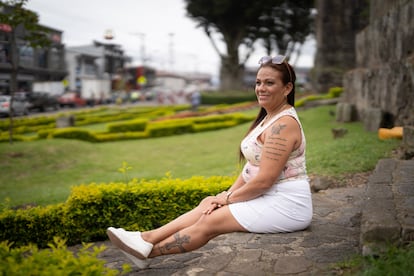
The new penal code provision enables a judge to recommend punishments other than prison time. It’s a brand of restorative justice that keeps certain convicts out of jail and gives both victims and perpetrators space to make amends and restitution. Rita Porras, a clinical psychologist from the Prevention Projects Unit at the Costa Rican Drug Institute, says it can be beneficial for drug users to know about a legal process that offers second chances. “At the end of the day, government neglect is the reason many women are in these situations,” said Zhuyem Molina, a judge who used to be a public defender and helped draft the restorative justice law. “The government should not punish people just because they’re poor.”
Restorative justice is based on a fundamentally different perspective. Punitive justice focuses on punishment and isolation, but the Costa Rican model takes a different approach. It emphasizes conflict resolution and reparation instead of condemnation. The restorative justice law was approved in 2018 and has consistently been supported by successive governments. This law establishes a structured process involving a judge, prosecutor, psychologists, social workers, the victim (civil society, in some cases), and the offender. To qualify for this process, three conditions must be met: it must be the first offense, carry a sentence of less than three years, and all parties must agree to this form of conflict resolution. Cases of violence against women do not qualify. An agreement must be reached within 30 days on how to repair the harm committed by the offender.
For Cerdas, the outcome was seven months in a detox center, commitment to a support group for former addicts, and two years of community service. “I went with the Genesis Foundation, which is Christ-centered, because it was only by the grace of God that I managed to crawl out of this hole,” she said. Now she is leading a team to help newcomers to the program and has moved back in with her youngest son. “I‘ve always wanted to change my life and kick drugs. I’ve tried 16 times, but I just didn’t know how to do it and didn’t have anyone to help me.”
Costa Rica’s approach also demonstrates a strong commitment to integrating the gender perspective in courts. In Latin America, 70% of imprisoned women are incarcerated for trafficking very small amounts of drugs. “If you look closely at women in prison, you realize that locking them up actually causes more harm to society. They’re heads of households, single mothers, vulnerable women... The cycles of crime tend to repeat in families that go hungry,” said Coletta Youngers, a senior advisor with WOLA, a research and advocacy organization advancing human rights in the Americas. “These are not the kind of dangerous people we need to keep away from society.”
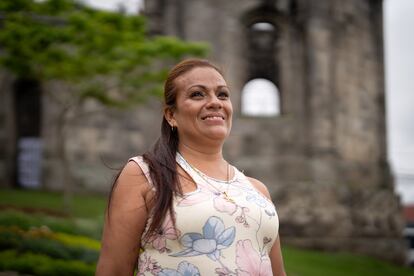
‘We’re not going easy or letting them off the hook’
Conservatives tend to have a different perspective on crime and punishment. Promoting alternatives to incarceration is anathema to people like President Nayib Bukele of El Salvador. Bukele’s security approach revolves around imprisoning anyone suspected of gang affiliation, resulting in the highest per capita incarceration rate in the world. Politicians in Ecuador, Honduras and Colombia have embraced Bukele’s iron-fisted security policies and strict law enforcement.
Celia Medrano, a well-known Salvadoran journalist and defender of human rights, recalls efforts in 2014 to pass a similar law in her country aimed at women coerced by gang members into carrying drugs. “We worked so hard, but we just couldn’t get the Ministry of Justice to understand the distinction between a woman who was coerced and one who wasn’t. Trying again now is totally out of the question because the country’s mindset is basically guilty until proven innocent.” Teodoro Bermúdez, a Costa Rican prosecutor who has embraced his country’s approach, said, “We still have many detractors here in Costa Rica who say we’re soft on crime, but people are always afraid of something new and different.”
Jovanna Calderón Altamirano, the head of Costa Rica’s Office of Restorative Justice, believes that criticism of restorative justice is often rooted in ignorance and driven by “punitive populism.” “People think that these processes are super lenient and all about benefitting the accused. But it’s not like that — we’re not going easy or letting them off the hook. These processes are actually well-regulated and closely monitored, with clear responsibilities to make things right and fix the harm caused.”
Last year, 2,379 restorative justice cases were closed with 98% satisfaction by all parties. “It is not an abolitionist model nor does it aim to end all incarceration,” said Calderón “Any kind of conflict can be dealt with through restorative justice, as long as we have qualified personnel, the necessary resources, and willingness by all parties.” Calderón believes even crimes of gender violence can be addressed this way, although they were were excluded from law due to feminist pressure. “Costa Rican society was not mature enough to understand that this is a very progressive law.”
The law has led to excellent outcomes — only 4% have reoffended during the two-year monitoring period. Recidivism in Colombia leads to a 36% reincarceration rate, while in Chile, the rate is 52.9%. In Mexico, it’s around 60% for robbery crimes. Costa Rica also found that psychosocial approaches resolve cases much more quickly (one to three months), and 86% more cost-effective compared to standard cases.
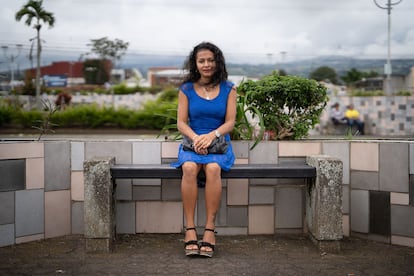
Cindy Torres Ortiz is one of the 96% who weren’t repeat offenders and successfully reintegrated into Costa Rican society. She has no intention of smuggling drugs into prison again or getting back together with the ex-boyfriend who coerced her during his year-long incarceration. “I was very much in love. He was the one making all the decisions and I was just going along with everything. He wouldn’t let me work elsewhere — I was basically his employee,” said this mother of three. “I was relieved when I finally got caught. I wanted it to be over.” Torres has been drug-free for nearly five years and has graduated from high school.
“Thinking that prison is the solution to all our problems is a total disaster for Latin America,” said Luis Andrés Fajardo, Colombia’s Deputy Ombudsman. In the last 20 years, the prison population in Latin America and the Caribbean has risen by 120%, compared to a 24% increase in the rest of the world. Additionally, one in three detainees has not yet been sentenced. “What’s intriguing about this process is how the offenders are actively involved, and how it considers what the victims want in terms of redress.”
The early precursors of restorative justice models emerged in Canada in the mid-1970s, and examined how indigenous communities resolved conflicts by emphasizing reintegration rather than punishment. Restorative justice also played a vital role in peace processes in South Africa, Northern Ireland and Spain.
‘I didn’t get another chance and now I’m paying for it’
Berta Robles (a pseudonym) didn’t get any second chances. In late October, we met the Nicaraguan inmate at the Vilma Curling Rivera Prison in San José. She averted her gaze as she sat on a plastic chair not far from the cell she has shared with 25 women for four years. Robles takes a deep breath before telling us her story.
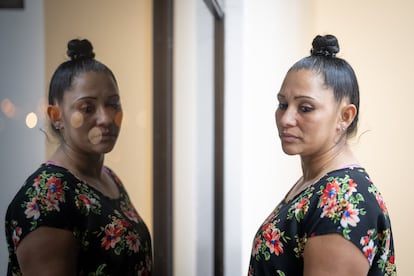
Robles has been living without legal documentation in Costa Rica for over 20 years. After her divorce, she worked at various odd jobs to support herself and five children. When she couldn’t make ends meet, she turned to prostitution, but the $16 she charged clients wasn’t enough to pay the rent. “I didn’t want to keep doing that,” she said. So when someone told her how easy it was to smuggle drugs into prisons, she decided to try. Her nervous, sweaty hands immediately gave her away to the prison guards. “I wasn’t made for that — they caught me right away.”
Robles was offered a restorative justice process and her sentence was commuted in exchange for community service. But then she tried to smuggle drugs into prison again to pay off the debt from first drug seizure. She was caught and sentenced to six years in prison in April 2019. “I didn’t get another chance and now I’m paying for it,” she told us after a long silence. As for her children, she won’t be giving dating advice, attending graduations or celebrating birthdays. She’s lost everything. The days go by slowly in prison. Robles works, studies and goes to all the activities available to her. She spends as little time as possible with her cellmates. “I just want to get out of here — jail is not the best place to turn things around.”
Sign up for our weekly newsletter to get more English-language news coverage from EL PAÍS USA Edition
Tu suscripción se está usando en otro dispositivo
¿Quieres añadir otro usuario a tu suscripción?
Si continúas leyendo en este dispositivo, no se podrá leer en el otro.
FlechaTu suscripción se está usando en otro dispositivo y solo puedes acceder a EL PAÍS desde un dispositivo a la vez.
Si quieres compartir tu cuenta, cambia tu suscripción a la modalidad Premium, así podrás añadir otro usuario. Cada uno accederá con su propia cuenta de email, lo que os permitirá personalizar vuestra experiencia en EL PAÍS.
¿Tienes una suscripción de empresa? Accede aquí para contratar más cuentas.
En el caso de no saber quién está usando tu cuenta, te recomendamos cambiar tu contraseña aquí.
Si decides continuar compartiendo tu cuenta, este mensaje se mostrará en tu dispositivo y en el de la otra persona que está usando tu cuenta de forma indefinida, afectando a tu experiencia de lectura. Puedes consultar aquí los términos y condiciones de la suscripción digital.
More information
Archived In
Últimas noticias
A survivor’s account of the Interoceanic Train accident: ‘We were scared because of the speed on the curve’
The Interoceanic Train, the Mexican alternative to the Panama Canal
What is known about the Interoceanic Train derailment in Oaxaca
Trump turns a Minnesota fraud allegation into ammunition for his MAGA army against Democrats
Most viewed
- Oona Chaplin: ‘I told James Cameron that I was living in a treehouse and starting a permaculture project with a friend’
- Reinhard Genzel, Nobel laureate in physics: ‘One-minute videos will never give you the truth’
- Why the price of coffee has skyrocketed: from Brazilian plantations to specialty coffee houses
- Pablo Escobar’s hippos: A serious environmental problem, 40 years on
- Chevy Chase, the beloved comedian who was a monster off camera: ‘Not everyone hated him, just the people who’ve worked with him’
